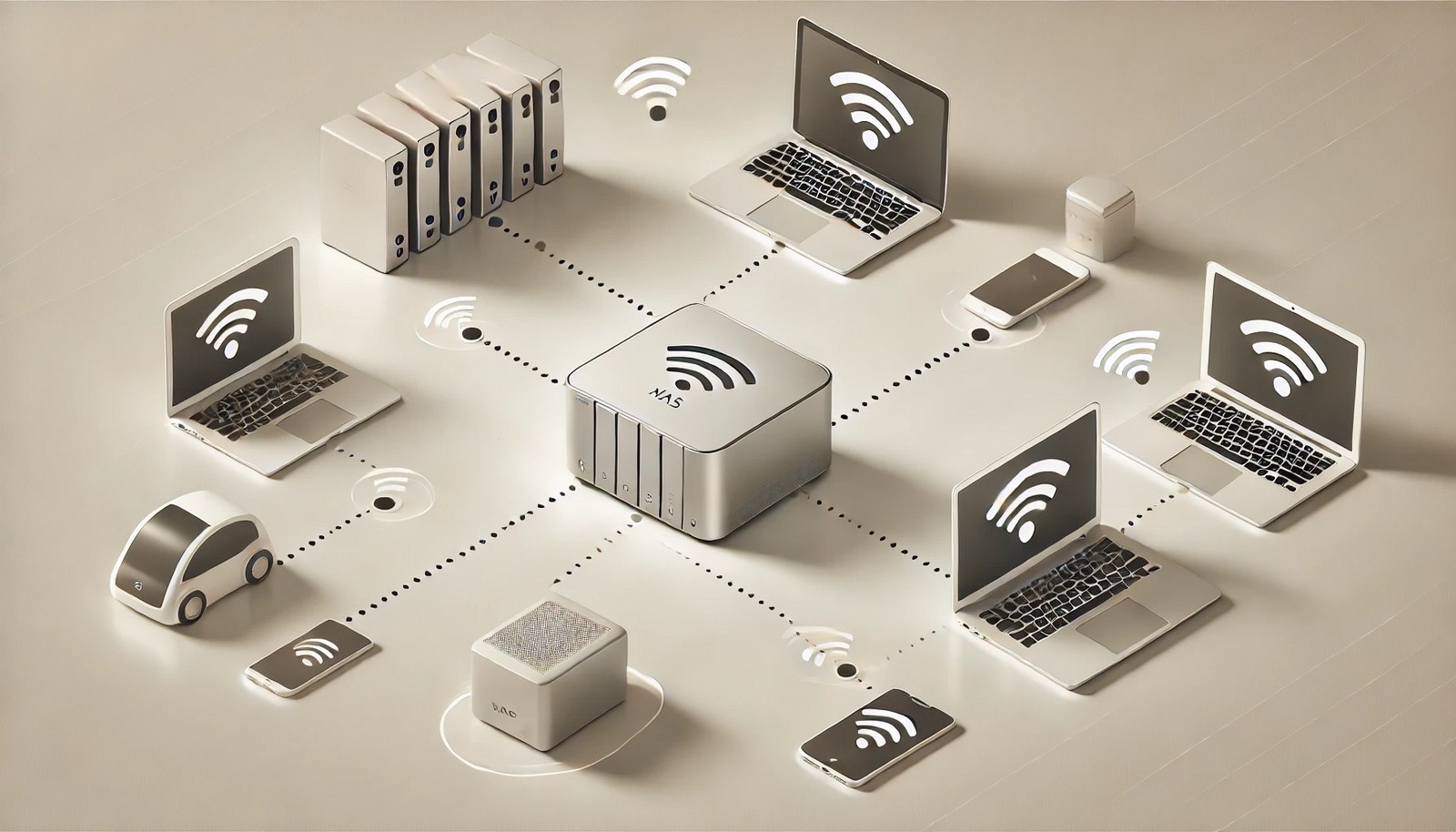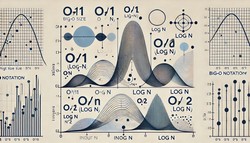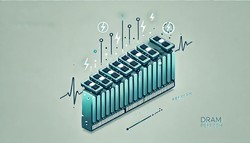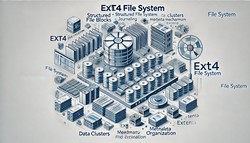NAS (Network Attached Storage)
 (Representational Image | Source: Dall-E)
(Representational Image | Source: Dall-E)
Quick Navigation:
- NAS Definition
- NAS Explained Easy
- NAS Origin
- NAS Etymology
- NAS Usage Trends
- NAS Usage
- NAS Examples in Context
- NAS FAQ
- NAS Related Words
NAS Definition
Network Attached Storage (NAS) is a dedicated file storage device that provides local area network (LAN) users with centralized, consolidated disk storage through a standard Ethernet connection. NAS devices are equipped with their own operating systems and manage file storage, retrieval, and sharing. They can be accessed by multiple users and devices simultaneously, offering scalability and security for home and enterprise environments. NAS supports common file sharing protocols like NFS, SMB/CIFS, and FTP, making it compatible with various systems.
NAS Explained Easy
Think of NAS as a magic box connected to your home Wi-Fi. Everyone in your house can open this box from their computers or tablets and put in or take out photos, music, and documents. It keeps everything safe in one place and makes it easy for everyone to share and find things when they need them.
NAS Origin
The concept of NAS emerged in the early 1980s as businesses sought efficient ways to store and access large volumes of data without overburdening local computers. Companies like IBM and Novell contributed to the development of early NAS technologies, which have since evolved into powerful, scalable storage solutions for both individuals and enterprises.
NAS Etymology
The term 'NAS' stems from the idea of data storage being connected to a network, rather than confined to individual computers.
NAS Usage Trends
Over the last decade, NAS usage has expanded beyond business applications into home environments. With growing demand for media streaming, backup solutions, and private cloud storage, NAS devices have become increasingly user-friendly. Small businesses and individuals now rely on NAS for data redundancy, media libraries, and secure backups.
NAS Usage
- Formal/Technical Tagging:
- Data Storage
- Network Architecture
- Cloud Storage - Typical Collocations:
- "NAS device"
- "NAS server"
- "NAS storage system"
- "network-based storage"
- "remote file access via NAS"
NAS Examples in Context
- A photographer uses a NAS device to store and organize thousands of high-resolution images, accessible from any computer in their studio.
- A family uses NAS at home to stream movies and share documents between laptops and smart TVs.
- Small businesses utilize NAS systems for automatic backups and remote access to critical files.
NAS FAQ
- What is NAS?
NAS is a network-connected storage device that allows multiple users and devices to store and retrieve data from a centralized location. - How does NAS differ from a traditional hard drive?
A traditional hard drive connects to one device, while NAS connects to a network and is accessible to multiple users. - Is NAS secure?
Yes, most NAS devices come with built-in security features like encryption, user authentication, and firewall settings. - Can NAS devices be expanded?
Yes, many NAS units allow additional hard drives or external expansions for increased capacity. - Does NAS require technical expertise to set up?
Modern NAS devices are designed for easy setup with user-friendly interfaces. - Can NAS be used for media streaming?
Yes, NAS is commonly used to stream videos, music, and photos to devices on the network. - What protocols does NAS use?
NAS supports protocols like SMB/CIFS, NFS, and FTP for cross-platform file sharing. - Is NAS suitable for businesses?
Yes, businesses use NAS for data backups, shared file systems, and remote access solutions. - Can NAS devices be accessed remotely?
Many NAS devices offer remote access features for secure file retrieval from anywhere. - How does NAS benefit home users?
It provides centralized storage for backups, media streaming, and easy file sharing between devices.
NAS Related Words
- Categories/Topics:
- Data Storage
- Cloud Storage
- Home Networks
- Business IT Infrastructure
Did you know?
NASA once used NAS solutions in the early 2000s to manage and share large datasets between research teams globally, significantly improving data accessibility and collaboration.
Authors | Arjun Vishnu | @ArjunAndVishnu

PicDictionary.com is an online dictionary in pictures. If you have questions or suggestions, please reach out to us on WhatsApp or Twitter.
I am Vishnu. I like AI, Linux, Single Board Computers, and Cloud Computing. I create the web & video content, and I also write for popular websites.
My younger brother, Arjun handles image & video editing. Together, we run a YouTube Channel that's focused on reviewing gadgets and explaining technology.
















Comments (0)
Comments powered by CComment